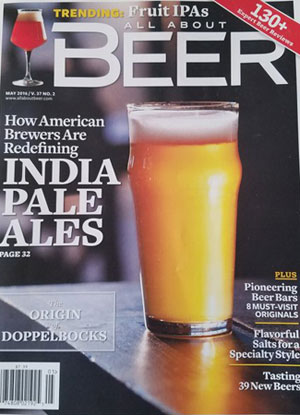MONDAY BEER & WINE LINKS, MUSING 3.28.16
The science behind why you like (or hate) certain beers, if at all.
“Part of what we are trying to get at here is not what experts think works but, in real practice, experience what people like,” says Cicrone program founder Ray Daniels, who is part of the Beer & Food Working Group that organized this “crowdtasting.” The tasting was Friday and the results will be discussed at the Craft Brewers Conference in May. I’d like to say I will report back then, but should I attend that presentation or one about using hops more efficiently at precisely the same time? [Via The Denver Post]
Tribal Drinking.
Crowdtasting will not provide all the answers to understanding why we drink what we do. Lew Bryson writes, “But thinking about why you do can be rewarding, and maybe lead you to a better understanding of what it is you’re looking for from beer, and that can help make you a happier, more directed person.” [Via All About Beer]
Time to Let The Old School Rejoin the Party?
Relevant to what Lew had to say, but it also made me think of the three-tap lineup at Rich’s Public House in New Albany, Indiana back in 1995. One was for Guinness, one for Pilsner Urquell and the “middle tap” rotated. [Via Boak & Bailey’s Beer Blog]
Worthington White Shield.
[Via Paul Bailey’s Beer Blog, h/T Boak & Bailey]
Pale and hearty.
[Via Michael Jackson’s Beer Hunter]
It’s strange how dots sometimes connect. Boak & Bailey’s weekly roundup led me to Paul Bailey’s post about White Shield. In turn I thought about Bill King and King & Barnes, then Steve King (who is not at all related). Steve King, a beer distributor in Peoria, Illinois, was way ahead of the game in the late 1980s, making more interesting beer available to drinkers in central Illinois than most were ready for. That included beers from King & Barnes. I haven’t seen Steve King in several years, but Saturday we’ll be on a panel together. The American Spirits: The Rise and Fall of Prohibition traveling exhibit is at the Peoria Riverfront Museum. Related events include “Speakeasy Saturdays.” The one five days hence will focus on “Rise of Craft Beer.” But enough nostalgia. White Shield is more interesting, and I remember the King & Barnes version quite fondly.
The Hottest Trend in Craft Brewing Is Beer That Doesn’t Taste Like Beer.
[Via Time]
Craft Brewers Embracing the Nutella Craze.
[Via CraftBeer.com]
No comment.
The aggressive, outrageous, infuriating (and ingenious) rise of BrewDog.
“In its brief history, BrewDog has upset, variously and sometimes repeatedly, rival breweries, drink industry associations, health organisations, the Advertising Standards Authority, even LBGT groups.” Even if you remember most of this stuff and BrewDog pisses you off just on basic principles this is a good read. There’s a reason that people want to go to work for “BrewDog” beyond the fact that James Watt is “not … troubled by self-doubt.” [Via The Guardian]
Bamberg, Germany: A city of just 70,000 people but nine breweries.
Regulars here do not need to be reminded about the charm of Bamberg, but as Will Hawkes concludes, “A beer culture this rich is good for the soul.” [Via The Washington Post]
NOT BEER
Cheap wine – good, or no good?
“If you can buy perfectly good Sancerre Rosé for less than £10, why pay more?”
Well … exactly. Why indeed? [Via Sediment]
Song Review – Sturgill Simpson’s “In Bloom” (Nirvana Cover).
“In the end the task of the singer is to sing, and the task of the audience is to listen.” [Via Saving Country Music]
FROM TWITTER
A cartoon by P.C. Vey. See more cartoons from this week's issue here: https://t.co/ItNi0euLcj pic.twitter.com/AcW9ITTm5s
— The New Yorker (@NewYorker) March 24, 2016
 I should probably wait to comment on Jeff Alworth’s story until our postwoman delivers the latest All About Beer magazine (John Holl tweeted this
I should probably wait to comment on Jeff Alworth’s story until our postwoman delivers the latest All About Beer magazine (John Holl tweeted this